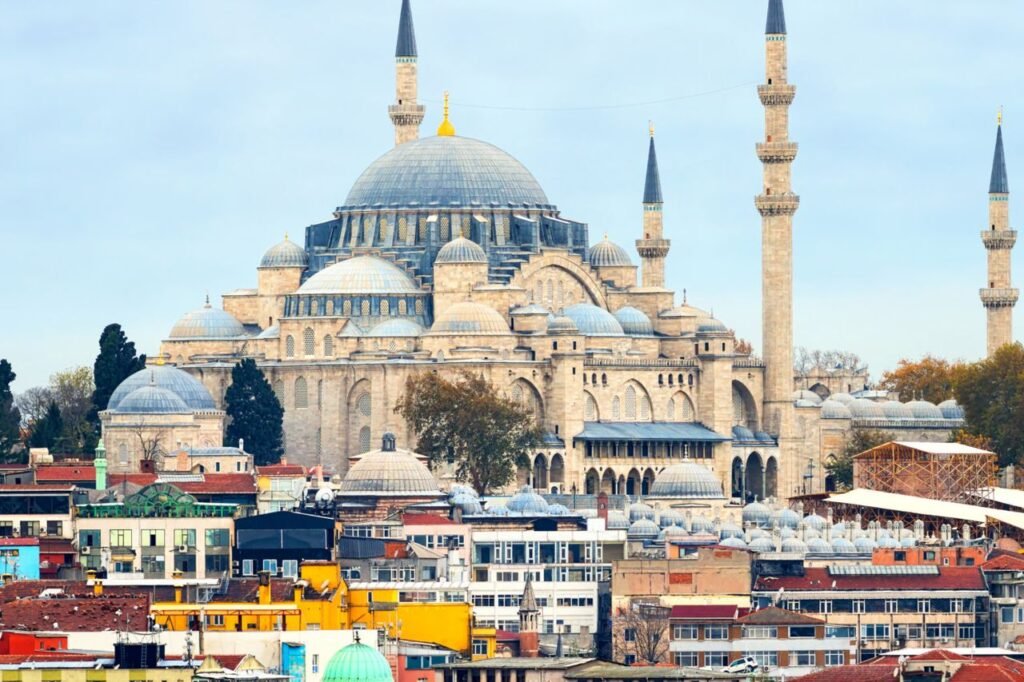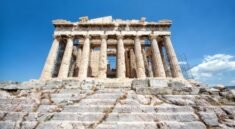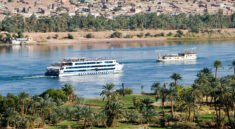
Perched on the crossroads of Europe and Asia, divided by the glimmering waters of the Bosphorus Strait, Istanbul is a city like no other. It is a place where continents meet, where time folds upon itself, and where ancient traditions blend effortlessly with modern life. But what sets Istanbul apart from every other metropolis in the world is its unparalleled legacy—it once served as the capital of not one, but three great empires: the Roman, Byzantine, and Ottoman.
Few cities on Earth can rival the historical depth and cultural wealth of Istanbul. For over 1,600 years, it was the epicenter of imperial power, the seat of emperors and sultans, a city of palaces, cathedrals, mosques, and markets. Its layers of history are visible at every turn—from Roman aqueducts and Byzantine mosaics to Ottoman minarets piercing the sky. In Istanbul, the past is not something locked away in museums—it lives and breathes in the architecture, the streets, the stories, and the spirit of the people.
This is the story of a city that shaped civilizations, guarded empires, and continues to enchant all who walk its storied paths.
The Rise of Byzantium: The Roman Era
Long before it became known as Constantinople or Istanbul, the city began as a Greek colony named Byzantium, founded in the 7th century BCE. Strategically located at the junction of the Golden Horn, Sea of Marmara, and Bosphorus, Byzantium was a natural hub for trade and military control.
The city’s transformation began in 330 CE, when Roman Emperor Constantine the Great chose it as the new capital of the Roman Empire. He saw in Byzantium not just a city, but a symbol—a bridge between East and West. He renamed it Nova Roma (New Rome), though it soon became widely known as Constantinople, meaning “City of Constantine.”
Under Roman rule, Constantinople was adorned with grand monuments, forums, and public baths modeled after those of Rome. Constantine’s vision was to create a Christian imperial capital, and he laid the foundation for the city’s central role in shaping Christianity as a dominant world religion.
The Byzantine Empire: A Christian Stronghold
After the fall of the Western Roman Empire in the 5th century, Constantinople remained the heart of the Eastern Roman Empire, known to history as the Byzantine Empire. For over a thousand years, it was a bastion of Orthodox Christianity, imperial splendor, and Greek-Roman culture.
Hagia Sophia: Crown Jewel of Byzantium
Built in 537 CE by Emperor Justinian I, the Hagia Sophia is perhaps the most iconic symbol of Byzantine greatness. With its massive dome soaring 55 meters above the ground, it was the largest cathedral in the world for nearly 1,000 years. Inside, its walls shimmered with golden mosaics depicting Christ, the Virgin Mary, and the saints, making it a spiritual marvel as well as an architectural one.
Hagia Sophia wasn’t just a place of worship—it was a statement of divine authority and imperial might. It served as the setting for imperial coronations, religious ceremonies, and theological debates that shaped the course of Christianity.
Walls of Theodosius and Urban Infrastructure
To protect the growing city, the Byzantines constructed massive fortifications, including the Walls of Theodosius, a system of double and triple defensive walls and moats that made Constantinople one of the most impenetrable cities in the world. These defenses helped the city withstand numerous sieges over the centuries.
Meanwhile, the Cistern Basilica, a vast underground reservoir, showcased the city’s advanced engineering capabilities. With marble columns and vaulted ceilings, it ensured a reliable water supply in times of siege or drought.
Despite invasions, plagues, and political strife, the Byzantine Empire—with Constantinople at its core—survived for over a millennium until a cataclysmic event changed its fate forever.
The Fall of Constantinople: Rise of the Ottoman Empire
In 1453, the world watched in awe as Sultan Mehmed II, known as Mehmed the Conqueror, led the Ottoman Empire in a historic siege of Constantinople. After 53 days of battle, the city finally fell, marking the end of the Byzantine Empire and the beginning of a new imperial age.
Mehmed entered the city with great respect for its legacy. Recognizing its value as a cultural and political center, he declared it the new capital of the Ottoman Empire and began transforming Constantinople into a Muslim imperial city without erasing its Christian heritage.
The Ottoman Transformation
Under the Ottomans, the city began to flourish anew. Islamic architecture rose beside Byzantine relics, creating a unique skyline of domes and minarets.
Conversion of Hagia Sophia
Perhaps the most symbolic act was the conversion of the Hagia Sophia from a church into a mosque. Minarets were added, Christian imagery was covered (though not destroyed), and it became the model for future Ottoman mosque design. Today, it stands as a museum and mosque, representing both Islamic and Christian heritage.
Masterpieces of Ottoman Architecture
The Ottomans left a profound architectural legacy across the city. Among the most magnificent structures are:
- The Blue Mosque (Sultan Ahmed Mosque): Built in the early 17th century with six minarets and a vast courtyard, it’s famous for its thousands of blue İznik tiles.
- Topkapi Palace: The administrative and residential heart of the Ottoman sultans, this sprawling palace housed generations of rulers, their families, and courtiers.
- Süleymaniye Mosque: Designed by the famed architect Mimar Sinan, it is an architectural masterpiece and a symbol of the empire’s peak under Sultan Suleiman the Magnificent.
The Ottomans also revitalized urban infrastructure: establishing schools, public baths (hamams), libraries, and bazaars, including the world-famous Grand Bazaar, a labyrinth of over 4,000 shops under one roof.
A City of Many Names, One Soul
Throughout its life, this city has gone by many names—Byzantium, Constantinople, and finally Istanbul. Officially adopted in 1930, the name “Istanbul” has its roots in the Greek phrase “eis tin polin” meaning “to the city”, which residents and travelers had long used colloquially.
Despite the change in name and empire, the city’s core identity endured: as a place where civilizations met, where power resided, and where East and West were never truly separate.
Istanbul Today: A Living Tapestry
Modern-day Istanbul is a dazzling metropolis of over 15 million people—Turkey’s cultural and economic heart. Yet it still pulses with the spirit of its past. Nowhere else can you:
- Stand inside the Hagia Sophia, where Christian mosaics and Islamic calligraphy exist side by side.
- Hear the call to prayer echo across the rooftops while bells toll in nearby churches.
- Wander through ancient streets where Roman, Byzantine, and Ottoman layers are all visible.
In the same day, you can explore the ruins of ancient Hippodromes, admire the Byzantine mosaics in Chora Church, sip Turkish tea in a centuries-old caravanserai, and enjoy the lively nightlife of Beyoğlu.
Cultural Legacy
Istanbul remains a cradle of culture, inspiring artists, poets, and thinkers from around the world. Writers like Orhan Pamuk, the Nobel laureate, have captured its melancholic beauty, while filmmakers, musicians, and painters find endless inspiration in its light, contrasts, and history.
Cuisine
The city’s cuisine is a testament to its multicultural past. Ottoman palace dishes mingle with Balkan, Middle Eastern, and Central Asian flavors. Street foods like simit (sesame-crusted bread rings), kebabs, köfte, and baklava offer delicious bites of history.
Conclusion: The Eternal City of Empires
From its origins as a Greek outpost to its days as Rome’s new heart, from its golden age under Byzantine emperors to its grandeur as the jewel of the Ottoman world, Istanbul has been the beating heart of empire after empire. Each left behind stories in stone, ritual, and legend.
Yet the city is not frozen in time. It continues to evolve—embracing the future while preserving its soul. Istanbul is a reminder that greatness is not found in monuments alone, but in the power of people, places, and ideas to endure.
Istanbul is not just a city you visit. It’s a civilization you enter. A world you experience. A history you feel.



